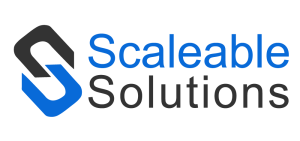Problem Statement:
Educators often face overwhelming administrative tasks, such as grading, attendance tracking, and lesson planning, which detract from their core teaching responsibilities. These time-consuming activities can lead to teacher burnout, reduced instructional quality, and hindered student engagement. As a result, both teachers and students experience diminished performance and satisfaction.
Solution:
Implementing automation in EdTech can significantly enhance efficiency and boost performance in several ways:
- Automated Grading and Feedback:
Tools like Grade scope and AI-driven assessment platforms can automatically grade assignments and provide instant feedback to students. This not only saves teachers hours of manual grading but also allows for more timely and personalized feedback, which can improve student learning outcomes.
- Streamlined Administrative Workflows:
Automation can simplify administrative tasks such as attendance tracking and record-keeping. For instance, RFID attendance systems can automatically log student presence, reducing the time teachers spend on these tasks and allowing them to focus more on instruction.
- Dynamic Lesson Planning:
Platforms that automate lesson plan creation enable teachers to develop and update their plans efficiently. By integrating multimedia resources and interactive elements, these tools can enhance student engagement and make lessons more effective.
- Enhanced Communication:
Automated communication tools, such as chatbots and email automation, can facilitate smoother interactions between teachers, students, and parents. This ensures that important information is communicated promptly, fostering a supportive learning environment.
- Data-Driven Insights:
Automation tools like Schoolytics aggregate data from various sources to provide actionable insights into student performance. Educators can quickly identify trends and areas needing improvement, allowing for timely interventions that enhance student success.
Conclusion
Implementing a real-time analytics system for monitoring patient vital signs addresses the critical need for timely and accurate patient monitoring in healthcare facilities. By leveraging wearable sensors, IoT devices, and advanced analytics, healthcare providers can continuously monitor patients and respond swiftly to any changes in their condition. This approach enhances patient safety and outcomes and optimizes healthcare delivery efficiency. Moreover, it alleviates the burden on healthcare staff, allowing them to focus more on direct patient care rather than routine checks. Overall, real-time analytics in patient monitoring represents a significant advancement in modern healthcare, promising better health outcomes and operational efficiencies.


